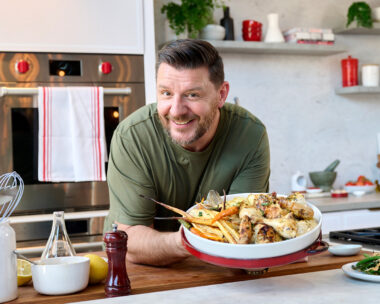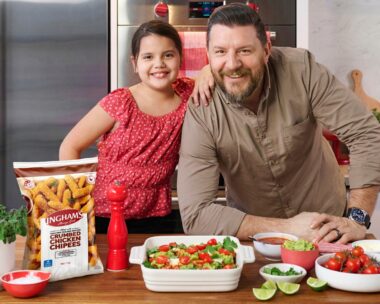As we all know, the weight-loss industry is worth millions of dollars a year, but 95 per cent of people who lose weight put it back on within 12 months. To ensure you’re one of the five per cent who keep it off, you need to involve your brain.
Sydney-based doctor Dr Helena Popovic has written NeuroSlimmng: Let Your Brain Change Your Body (Viking, $40). She says our brain plays a key role in deciding how, where and why our body stores fat – and why to get slimmer, we really need to use our grey matter. Here, she explains how you can make it work for you.
How does your brain affect your weight?
The brain is your control centre – every part of your body follows the instructions and signals sent by the brain. So eating in different emotional states affects how you digest food and store fat. For example, eating when you feel guilty, angry or anxious causes your body to produce the hormone cortisol, and that instructs your body to store fat around the abdomen.
But if you eat the same meal when you’re relaxed, you activate the brain’s left prefrontal cortex, releasing oxytocin. This hormone slows eating and improves digestion so we’re less likely to store fat.
What’s the takeaway message from your book NeuroSlimming?
Actions, thoughts and emotions can change your brain and NeuroSlimming helps you create new habits that rewire your brain and stop self-sabotaging behaviours.
The book includes a series of practical steps that, when repeated and followed, create new habits so your brain and body work together to improve weight loss and health.
How do I get started?
The first step is awareness. Next time you get a craving, don’t feel hopeless and useless, because negative thoughts increase the craving. Instead, be aware of the craving as this engages your brain’s frontal lobe and helps you become more rational.
Then you can intercept that craving. Think of something positive and pleasurable like your last holiday or the first time you held your baby, so your brain produces chemicals that dampen the craving.
What are the other key steps in NeuroSlimming?
I have developed what I describe as the ‘Five Freedoms’, with a number of practical steps or ‘Missions’ to make each Freedom work. The Freedoms are questions you ask yourself to help you make the right choices.

What are the five freedom steps?
1 Think about ‘living, not dieting’
Do you have a healthy body because you lead a fulfilling life, or are you on a diet and feeling deprived? It’s better to eat when you’re hungry, eat what you like and not what you don’t like, and to eat with your full attention.
2 ‘Be you, not new’
Think about whether you’re being true to who you are, or are you trying to be someone new because society says you should be? Work out what you want from your health and body. Write a mission statement with your goal that is positive, personal and precise.
3 Focus on ‘love not war’
Are you treating your body like a temple or a battleground? A key part of this step is to embrace your feelings, whatever they may be, because suppressing feelings doesn’t help. And be more grateful because gratitude lessens anxiety, raises energy levels and is a buffer against stress. When you look in the mirror, focus on everything you like, not what you don’t like about yourself.
4 ‘Fun, not force’
Ask yourself, are you forcing yourself to exercise? Move away from the ‘no pain, no gain’ idea and instead try simpler things like standing more often, rather than sitting, and moving your body in ways you enjoy as often as possible.
5 Find direction, not ‘perfection’
It’s not about reaching a predetermined state of perfection. Instead, think about what choices you can make each day for better health and take one step after another in the right direction.
Any other tips to make NeuroSlimming a success?
Be aware and focus, and you will see positive changes sooner than you expect – all it takes is about 15 minutes of thought a day. Get other people on board so you can remind each other of the steps and support each other, too.
Words: Sarah Marinos
For more, see this month’s Simply You magazine, visit our Facebook page, and follow us on Instagram.




